Introduction
Step into a world of vibrant colors and joy as we delve into the traditions and festivities of Holi, the festival of colors. In this complete guide, we will explore the origins of this ancient Hindu celebration, its significance, and how it is observed around the world.
Holi, also known as the “Festival of Love,” marks the arrival of spring and celebrates the triumph of good over evil. With roots in ancient Indian mythology, this exuberant festival is filled with dancing, singing, and of course, the iconic throwing of colorful powders known as gulal.
Throughout the article, we will delve into the various customs and rituals associated with Holi, such as the lighting of bonfires, playing with water guns and balloons, and indulging in traditional sweets and delicacies. We will also provide tips for participating in Holi, including how to dress, protect your skin, and capture the most mesmerizing moments of the celebration.
Join us as we embark on an unforgettable journey into the kaleidoscope of colors and traditions that make Holi a truly enchanting and joyful experience for people of all ages.
Read More – Corporate Deals Website and Top 10 Hyderabad Restaurants
History and Significance of Holi

Holi has its roots in Hindu mythology, dating back to ancient times. It is believed to commemorate the divine love between Lord Krishna and Radha, a symbol of eternal devotion. The festival is also associated with the legend of Prahlada, a young prince who was saved by Lord Vishnu from the clutches of his evil father, King Hiranyakashipu. As a result, Holi is celebrated as the triumph of good over evil.
The festival begins on the evening of the full moon day in the Hindu month of Phalgun. On the first night, a bonfire known as Holika Dahan is lit to symbolize the destruction of evil. People gather around the bonfire, sing hymns, and offer prayers. The next day is when the real fun begins, as people come together to play with colors and indulge in joyful celebrations.
Explore More Topics – Types Of Footwear For Women and Iphone Models 2024
Traditional Customs and Rituals of Holi

Holi is a festival that brings people together, breaking down barriers of caste, creed, and social status. It is a time for forgiveness, renewal of friendships, and the celebration of unity. One of the most cherished traditions of Holi is the throwing of gulal, vibrant colored powders, on each other. This act of playfulness and camaraderie symbolizes the sharing of joy and love.
In addition to the playful throwing of colors, Holi is also marked by the exchange of sweets and delicacies. Traditional Holi sweets like gujiya, a sweet dumpling filled with khoya and dry fruits, and malpua, a deep-fried pancake dipped in sugar syrup, are prepared and shared with friends and family. These delicious treats add to the festive spirit and are enjoyed by all.
Learn More – India’s Top 10 Mobile Phone and Student Offers In India
Colors of Holi: Symbolism and Significance
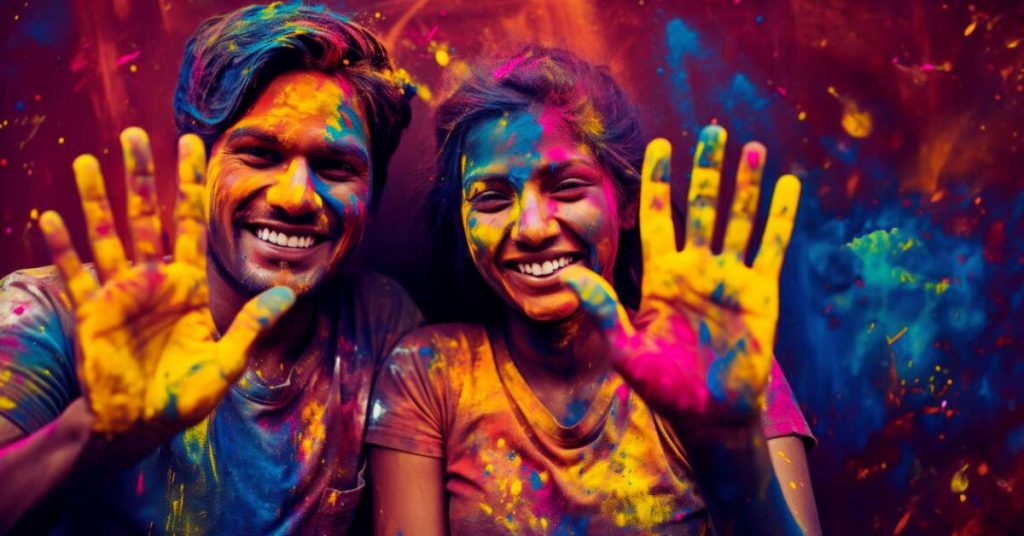
The colors used during Holi hold deep symbolic meanings. Each color represents a different aspect of life and emotions. Red symbolizes love and fertility, while yellow represents the auspicious and divine. Green signifies new beginnings and prosperity, and blue is associated with the divine and the infinite. By immersing themselves in these vibrant hues, people embrace the different facets of life and celebrate its diversity.
The significance of these colors goes beyond the surface level. They represent the breaking down of social barriers and the celebration of unity in diversity. Holi is a time when people come together, irrespective of their differences, to celebrate the joy of life and the beauty of human connections.
See More – Top 10 Salons In India
Traditional Sweets and Delicacies of Holi
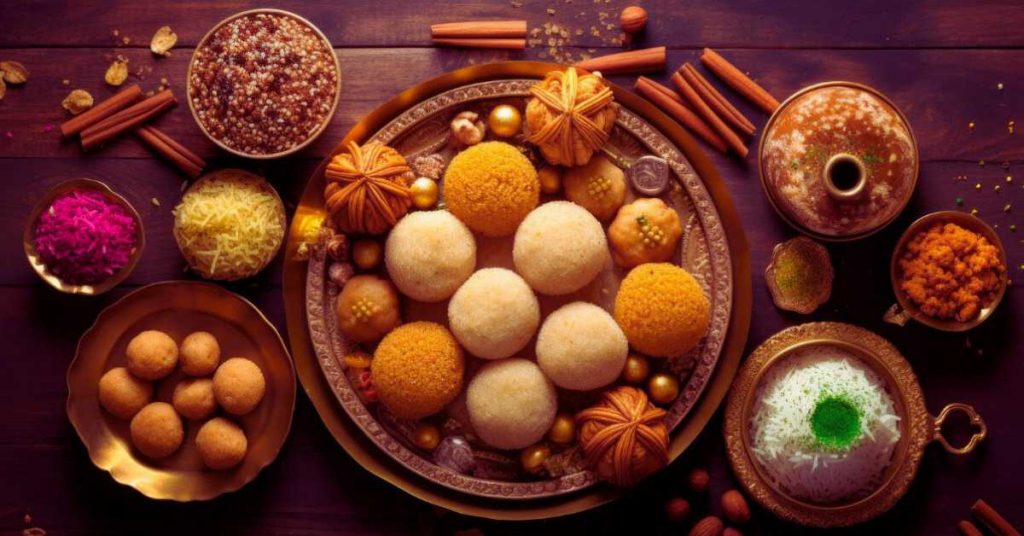
No celebration is complete without indulging in delicious sweets and delicacies, and Holi is no exception. Traditional Holi sweets hold a special place in the hearts of people, as they are not only a treat for the taste buds but also a symbol of love and togetherness.
Gujiya, the quintessential Holi sweet, is a deep-fried pastry filled with a mixture of khoya, dry fruits, and grated coconut. The crispy outer shell and the sweet, creamy filling make it a favorite among young and old alike. Another popular Holi delicacy is malpua, a syrup-soaked pancake made from a batter of flour, milk, and sugar. These golden, crispy pancakes are often garnished with dry fruits and served hot.
Music and Dance: Celebrating Holi with Joy and Enthusiasm
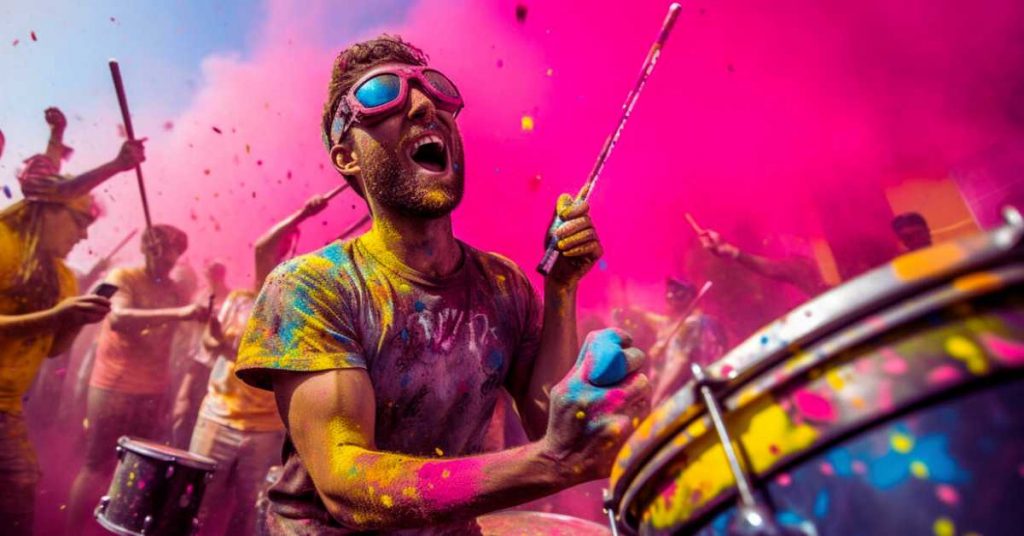
Music and dance are an integral part of Holi celebrations. As the colors fill the air, people come together to dance and sing in joyous harmony. Traditional Holi songs, known as Holi geet, are sung, and people dance to the beats of drums and other musical instruments. The energetic and rhythmic movements reflect the exuberance and happiness that Holi brings.
Apart from traditional songs, Bollywood music has also become an integral part of Holi celebrations. Popular Holi songs from Hindi movies are played, and people dance with abandon, immersing themselves in the festive spirit. The combination of traditional and contemporary music adds to the vibrant atmosphere and makes Holi a truly memorable experience.
Holi Around the World: Celebrations and Variations Across Different Regions
While Holi is primarily a Hindu festival celebrated in India, it has gained popularity around the world. In countries like Nepal, Bangladesh, Sri Lanka, and Pakistan, Holi is observed with great enthusiasm and joy. The festival has also made its way to the Western world, with Holi-inspired events and celebrations taking place in various cities.
Each region has its own unique way of celebrating Holi. In Mathura and Vrindavan, the birthplace of Lord Krishna, Holi is celebrated with great pomp and show. The Lathmar Holi in Barsana and Nandgaon is a special celebration where women playfully hit men with sticks, symbolizing the flirtatious love between Lord Krishna and the gopis.
Eco-Friendly Holi: Tips for Celebrating a Sustainable and Safe Festival
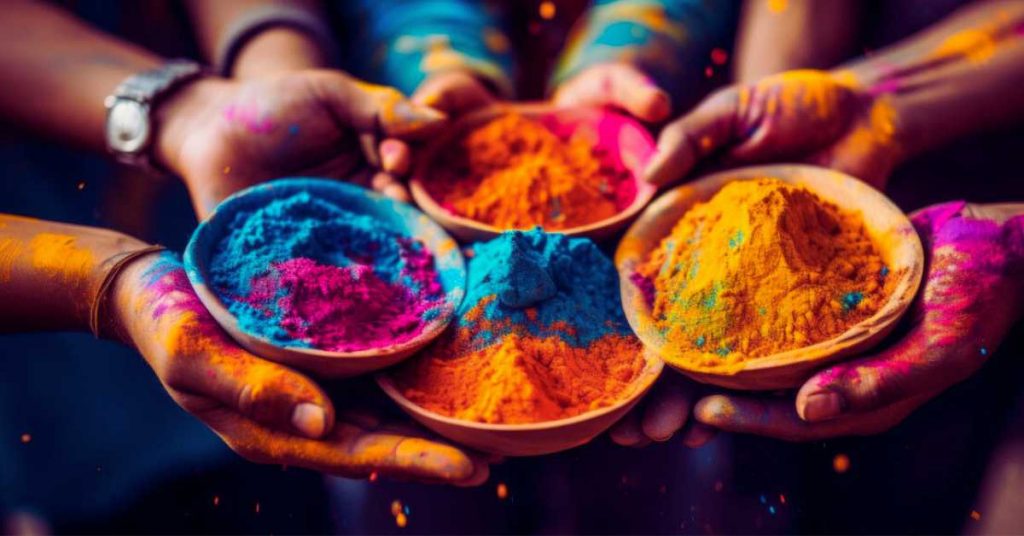
In recent years, there has been a growing awareness about the environmental impact of Holi celebrations. The excessive use of synthetic colors and water has led to pollution and water scarcity in many areas. To counteract these issues, eco-friendly Holi celebrations have gained popularity.
One way to celebrate a sustainable Holi is by using natural, homemade colors. These colors are made from natural ingredients like turmeric, henna, and flower petals, and are safe for both the environment and the skin. Additionally, water conservation is encouraged by using water guns and water balloons sparingly, or opting for dry Holi celebrations.
Holi-Inspired Art and Crafts: Diy Ideas for Creative Celebrations
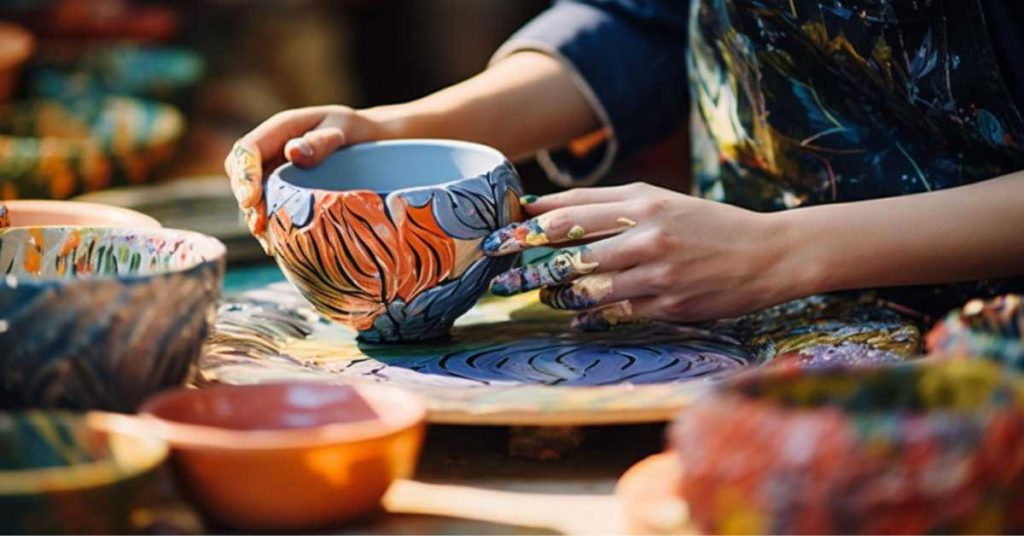
Holi is not just about playing with colors; it is also a time for creativity and self-expression. Many people indulge in Holi-inspired art and crafts to add a personal touch to their celebrations. From making colorful rangolis (artwork created using colored powders) to creating vibrant paper mache masks, there are endless possibilities for creative expression during Holi.
For those who enjoy DIY projects, Holi presents an opportunity to explore their artistic side. Creating handmade greeting cards, painting clay pots, or designing Holi-themed t-shirts are just a few ideas to add an extra touch of creativity to the festivities. These personalized creations not only enhance the festive ambiance but also serve as beautiful mementos of the celebration.
FAQ’s
1. What is Holi?
Holi, often referred to as the Festival of Colors, is a popular Hindu festival celebrated primarily in India and Nepal, marking the arrival of spring and the victory of good over evil. It’s a time of joy, forgiveness, and renewal, characterized by the throwing of colored powders and water.
2. When is Holi celebrated?
Holi is celebrated on the full moon day in the Hindu month of Phalguna, which typically falls in March or late February. The festival lasts for a night and a day, starting on the evening of the full moon day with Holika Dahan and continuing with the color celebrations the next day.
3. How is Holi celebrated?
The celebration starts with Holika Dahan, a bonfire signifying the victory of good over evil. The next day, known as Dhuleti, people smear each other with vibrant colored powders, throw colored water, participate in parties, dance under water sprinklers, and enjoy traditional foods and drinks.
4. What are the traditional colors used in Holi, and do they have any meaning?
Traditionally, Holi colors were made from flowers and herbs, which had a therapeutic significance. Today, synthetic colors are also used. Each color has a meaning: red symbolizes love and fertility, green signifies new beginnings, blue is the color of Krishna, and yellow represents turmeric.
5. Are there any traditional foods and drinks associated with Holi?
Yes, Holi is associated with several traditional foods and drinks. Gujiya, a sweet dumpling filled with khoya and dried fruits, is popular. Savory dishes like puran poli and dahi bhalla are also enjoyed. Thandai, a refreshing milk-based drink infused with spices and sometimes laced with bhang (cannabis), is a traditional beverage consumed during Holi.
6. How can I celebrate Holi safely and responsibly?
To celebrate Holi safely, use natural or organic colors that are skin-friendly and easy to wash off. Wear old clothes and protect your skin with oil or moisturizer. Respect others’ boundaries while playing with colors, and ensure the safety of animals by not applying colors to them. Dispose of waste properly to minimize environmental impact.
7. Can non-Hindus participate in Holi celebrations?
Absolutely! Holi is a festival that welcomes everyone, regardless of religion or background. It’s a celebration of unity, joy, and the diversity of life. Non-Hindus are encouraged to participate, learn about the cultural significance of the festival, and enjoy the festivities respectfully.
Conclusion: Embracing the Spirit of Holi
Holi is a festival that transcends boundaries and brings people together in a celebration of love, joy, and unity. Whether it’s the vibrant colors, the joyous music and dance, or the delicious sweets and delicacies, Holi offers a unique experience that captivates the senses and touches the soul.
As you join in the festivities of Holi, remember to embrace the spirit of the festival and its underlying message of love and harmony. Play with colors, dance with abandon, and immerse yourself in the joyous atmosphere. Holi is not just a festival; it is a celebration of life itself. So, let go of inhibitions, spread smiles, and create memories that will last a lifetime.
Celebrate Holi, the festival of colors, and let the vibrant hues paint a picture of love, togetherness, and happiness in your heart. Happy Holi!


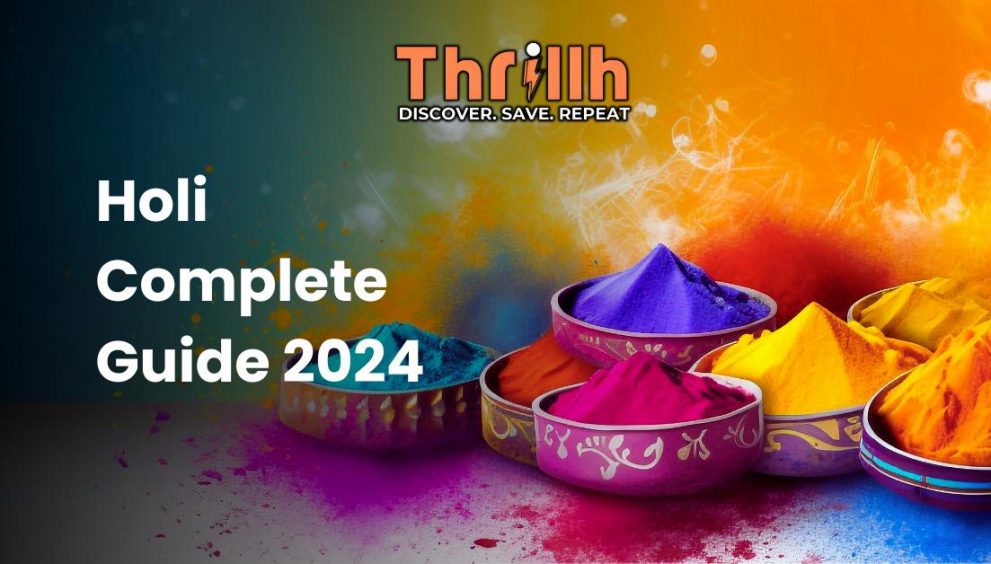



16 Best Vodka Shots Guide - Classic, Fruity, & Unique Recipes
02nd Jul 2024[…] and high-energy gatherings. They are a staple at birthday parties, nightclubs, and even at more traditional festivities, reflecting a blend of modern lifestyle and age-old customs. The popularity of vodka shots, in […]
Top 10 Indian Fashion Brands (Updated)
03rd Jul 2024[…] is celebrated for its commitment to preserving traditional Indian crafts and textiles. Offering a diverse range of clothing, accessories, and home decor […]
Top 10 Salons in India 2024: Beauty Unleashed (Updated)
08th Jul 2024[…] a country renowned for its rich cultural heritage and vibrant traditions, has also become a beacon of style and beauty innovation in recent […]
The 5 Best iPhone Models for 2024 in India | Thrillh
09th Jul 2024[…] it the best Apple iPhone in India. It boasts a stunning Super Retina XDR OLED display, providing vibrant colors and deep blacks. The device is powered by Apple’s A15 Bionic chip, which delivers […]
Myntra Sale Calendar 2024-2025: Dates, Discounts & Tips
02nd Aug 2024[…] ready for Holi with Myntra’s Holi Party Sale, featuring vibrant colors and festive outfits. Ideal for celebrating the festival of colors with […]
78th Independence Day of India - Journey & Achievements
14th Aug 2024[…] tradition adds to the festive atmosphere and serves as a visual representation of the nation’s unity and […]
Raksha Bandhan 2024: Celebrating the Eternal Bond of Siblings
16th Aug 2024[…] Raksha Bandhan traditionally celebrates the bond between brothers and sisters, the festival has evolved to embrace broader meanings. Today, […]
Discover the 10 Best Foods for Health in 2024
21st Aug 2024[…] nourishing your body is a journey, not a destination. These 10 incredible foods are your compass, guiding you towards a vibrant and healthy future. As you incorporate them into your diet, savor the vibrant colors, explore new […]
Happy Krishna Janmashtami 2024: Significance, & Traditions
26th Aug 2024[…] prayers, and festivities. As we delve into the significance of Krishna Janmashtami, we’ll explore traditional practices, cultural variations, modern celebrations, and the profound impact this festival has on […]
Ganesh Chaturthi 2024: The Festival of Lord Ganesha
03rd Sep 2024[…] The origins of Ganesh Chaturthi date back to ancient India, where the worship of Lord Ganesha was prevalent among various communities. However, it was during the Maratha reign, particularly under the leadership of Chhatrapati Shivaji Maharaj, that the festival gained prominence as a public celebration. […]
Navratri 2024: Festival Dates, Significance & Celebrations
09th Oct 2024[…] is a vibrant and spiritually significant Hindu festival celebrated in honor of Goddess Durga and her nine divine manifestations. According to Hindu mythology, the […]
https://evolution.org.ua/
25th Nov 2024At this moment I am going awqay to do my breakfast,
once having myy breakfast coming over again tto read further news. https://evolution.org.ua/
Christmas Parties Hyderabad March 2025: Venue, Price & Guest
06th Jun 2025[…] Kickstart your festive celebrations with a fitness event designed for all ages. The half marathon features Christmas-themed stations […]